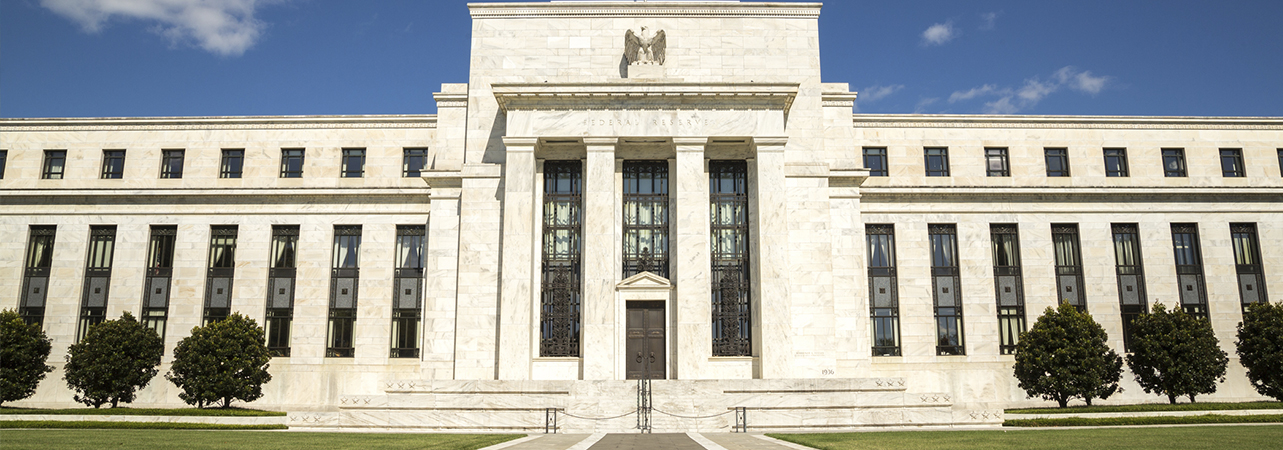As expected, the US central bank implemented its second cut in interest rates since 2008 during September. Having previously reduced its key federal funds rate in July, the Federal Reserve announced a cut of 0.25 percentage points to a range of 1.75% to 2%.
- President Trump continued to heap criticism on the Fed
- The labour market weakened during August
- The US agreed to postpone tariff increases on Chinese goods by two weeks
To view the series of market updates through September, click here
As expected, the US central bank implemented its second cut in interest rates since 2008 during September. Having previously reduced its key federal funds rate in July, the Federal Reserve (Fed) announced a cut of 0.25 percentage points to a range of 1.75% to 2%. Within the Federal Open Market Committee (FOMC), seven members voted to cut rates by 25 basis points, two members voted to leave rates unchanged, and one member voted for a larger reduction.
”Where did I find this guy Jerome?” (President Donald Trump)
In their statement, Fed policymakers cited “uncertainties” about the outlook for economic growth against a backdrop of faltering global growth and trade disputes. Nevertheless, the Fed slightly upgraded its forecast for US economic growth in 2019 from 2.1% to 2.2%.
President Donald Trump continued to heap criticism on the Fed and its Chair, Jerome Powell, for easing monetary policy too slowly, tweeting: “Jay Powell and the Federal Reserve Fail Again. No “guts”, no sense, no vision!”, and “Where did I find this guy Jerome?” However, during the press conference following the announcement of the rate cut, Chair Powell emphasised that the possibility of negative interest rates was “not at the top of the list”.
Over September, the Dow Jones Industrial Average Index rose by 1.9%, the S&P 500 Index climbed by 1.7%, and the Nasdaq Index rose by 0.5%. According to S&P Dow Jones Indices, the best-performing S&P industry sectors during the month were financials, utilities, and energy. Health care was the worst performer, followed by communications services and real estate. A formal impeachment inquiry was launched against President Trump by the Democrat-controlled House of Representatives over his dealings with Ukraine.
The US economy added 130,000 jobs during August, compared with a 12-month average of 158,000 per month. The rate of unemployment remained steady at 3.7% and average hourly earnings rose at an annualised rate of 3.2%.
Although the trade conflict between the US and China ended September without a resolution, China announced that some of its planned tariff increases on US goods would be delayed until September 2020. Meanwhile, the US announced that it would postpone tariff increases scheduled to take place on 1 October by two weeks as a “goodwill gesture” . Elsewhere, the US and Japan reached an initial trade agreement that will remove or cut tariffs on a range of products.
A version of this and other market briefings are available to use in our newsletter builder feature. Click here




